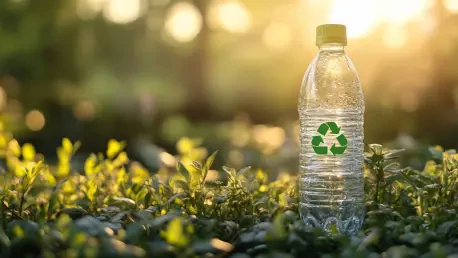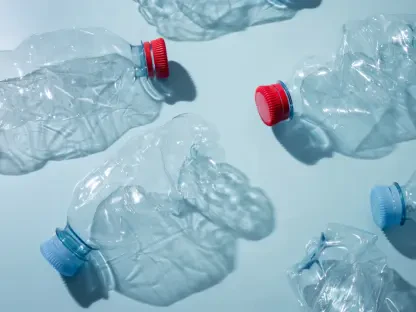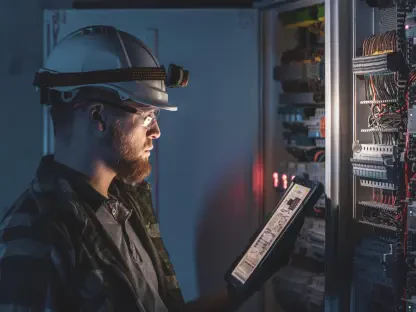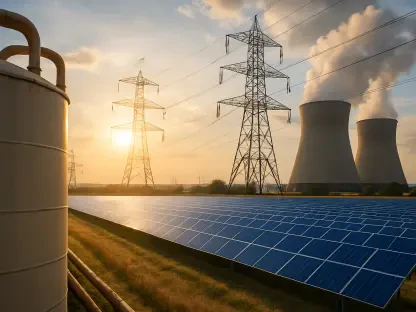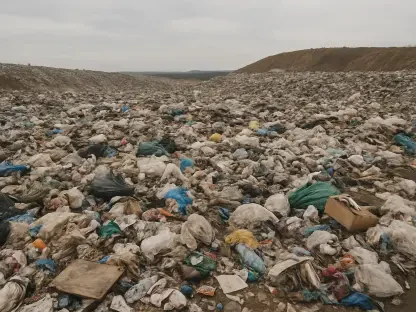The recycled plastics market in the US faces a daunting reality: despite growing environmental awareness, the industry struggles to gain traction amid systemic barriers, and with millions of tons of plastic waste generated annually, only a small fraction is successfully recycled into new products. This leaves a significant gap between ambition and achievement. This roundup dives into the challenges plaguing the sector, drawing on diverse perspectives from industry leaders, policymakers, and sustainability advocates. The purpose is to unpack the core issues—ranging from supply-demand mismatches to policy gaps—and highlight actionable ideas for revitalizing the market. By synthesizing these varied viewpoints, this discussion aims to shed light on why progress remains elusive and what can be done to forge a path toward a circular economy.
Unpacking the Crisis: Why Recycled Plastics Markets Falter
The current state of recycled plastics in the US reveals a troubling disconnect between potential and reality. Industry leaders at a recent major recycling conference in Chicago pointed out that while the volume of recyclable material is substantial, the market fails to absorb it due to insufficient demand. This imbalance not only stalls recycling efforts but also undermines broader sustainability goals, as unrecycled plastics often end up in landfills or as pollution. The environmental and economic stakes are high, with missed opportunities to reduce reliance on virgin materials and create jobs in a green economy.
Beyond the numbers, the crisis reflects deeper structural flaws that span the entire supply chain. Experts across the board agree that without robust systems to collect, process, and utilize recycled plastics, the industry cannot thrive. Key hurdles such as inadequate infrastructure and inconsistent regulations exacerbate the problem, leaving stakeholders searching for solutions. This roundup explores these challenges through a collection of insights, comparing differing opinions on how to address the persistent struggles.
Core Challenges: A Spectrum of Perspectives
Supply and Demand Mismatches: A Market in Limbo
One of the most pressing issues, as noted by several industry insiders, is the stark mismatch between the supply of recycled plastics and the demand for them. For materials like polyethylene (PE) and polypropylene (PP), there’s often an oversupply, with processors ready to handle far more than the market currently requires. This surplus leads to depressed prices and discourages investment in recycling operations, creating a vicious cycle of stagnation that hampers growth.
Conversely, for polyethylene terephthalate (PET), commonly used in beverage bottles, the situation flips to a shortage of supply despite high demand. Sustainability advocates highlight that many companies rely on imported PET bales to meet their needs, pointing to a domestic collection shortfall. This contrast between oversupply and undersupply across resin types illustrates a fragmented market where economic incentives fail to align with environmental priorities, leaving experts divided on whether to prioritize stimulating demand or boosting collection.
A third perspective emerges from market analysts who argue that the lack of long-term contracts and stable pricing deters both recyclers and end-users from committing to recycled materials. Without assurance of consistent returns, businesses hesitate to scale operations or integrate recycled content into their products. This uncertainty underscores the need for mechanisms to balance supply and demand dynamics effectively.
Infrastructure Deficiencies: A Broken Foundation
Infrastructure limitations stand out as a critical barrier, with many in the recycling sector lamenting the inadequacy of domestic systems. Material recovery facilities (MRFs) often lack the equipment or financial motivation to handle low-value plastics like flexible films, prioritizing more profitable items such as metals or cardboard. This selective focus results in significant amounts of recyclable plastics being discarded, further widening the gap between waste generation and recovery.
Recycling plant operators add that reliance on imported materials to meet production quotas signals a deeper flaw in local collection networks. The absence of widespread, efficient systems to gather plastics at the source forces companies to look abroad, increasing costs and carbon footprints. Such dependency raises concerns about the long-term viability of the industry and the missed chance to build self-sufficient regional hubs.
Some infrastructure experts propose that targeted investments in MRF upgrades and collection programs could turn the tide. They emphasize the potential for localized recycling loops to reduce transport emissions and stabilize supply chains. However, the high upfront costs of such initiatives remain a sticking point, prompting calls for public-private partnerships to share the financial burden and drive systemic improvement.
Policy Gaps: The Call for Stronger Regulation
On the policy front, there’s a growing consensus among stakeholders that voluntary efforts by companies are insufficient to spur change. Advocates for extended producer responsibility (EPR) legislation argue that federal mandates could enforce demand for recycled content and hold producers accountable for the lifecycle of their packaging. Such measures, they suggest, would create a level playing field and stabilize prices, encouraging broader adoption of recycled plastics.
Regional disparities in policy enforcement add another layer of complexity, as noted by regulatory analysts. In states with EPR laws, weak penalties for non-compliance fail to compel large packaging producers to act, diluting the impact of these initiatives. This inconsistency fuels a push for national standards that could harmonize rules and foster innovation across the industry, though skeptics warn of potential bureaucratic delays in implementation.
A contrasting view from some business leaders suggests that while policy is essential, overregulation risks stifling smaller players who lack the resources to adapt quickly. They advocate for a balanced approach, combining incentives like tax breaks with mandatory targets to ease the transition. This debate highlights the challenge of crafting policies that are both effective and equitable, ensuring all stakeholders can contribute to a sustainable future.
Brand Commitments vs. Economic Realities: A Contentious Divide
The role of consumer packaged goods (CPG) companies draws mixed opinions, with many sustainability experts expressing frustration over unfulfilled promises to use recycled content. Despite public pledges, the higher cost of recycled materials compared to virgin plastics often deters brands from following through, especially in a market flooded with cheap petrochemical alternatives. This reluctance slows the momentum needed to build a robust recycling ecosystem.
Beverage industry representatives offer a more optimistic take, pointing to genuine efforts to incorporate recycled PET into bottles as evidence of progress. They argue that with the right support—such as subsidies or clearer pricing structures—more companies would commit to sustainability goals. Their stance suggests that targeted interventions could bridge the gap between intention and action, particularly for high-visibility sectors under consumer scrutiny.
On the flip side, petrochemical industry observers note that the oversupply of virgin materials creates a formidable barrier, as cost remains king in corporate decision-making. They question whether public pressure or stricter policies will be enough to shift priorities toward recycled options. This tug-of-war between economic pressures and environmental commitments continues to shape the narrative, with no easy resolution in sight.
Key Takeaways from Diverse Voices
Synthesizing these insights reveals a shared recognition of demand shortages as a primary obstacle, alongside crumbling infrastructure and the competitive edge of virgin plastics. Industry leaders stress the urgency of policy reforms like EPR laws to mandate recycled content and fund system upgrades. Meanwhile, infrastructure specialists call for incentivizing MRF improvements to handle diverse plastics effectively.
Sustainability advocates and market analysts converge on the need for supply chain collaboration, urging stakeholders to identify practical end-uses for recycled resins beyond traditional packaging. Their collective input underscores that no single solution will suffice; instead, a multifaceted strategy combining regulation, investment, and education is essential. These varied perspectives paint a comprehensive picture of an industry at a crossroads, grappling with intertwined challenges.
A notable point of divergence lies in the approach to brand accountability. While some push for punitive measures to enforce commitments, others favor incentives to encourage voluntary adoption. This spectrum of thought enriches the discussion, offering a range of tools to tackle the crisis from different angles and highlighting the complexity of aligning economic and environmental goals.
Reflecting on the Discussion and Next Steps
Looking back on this roundup of expert opinions, the depth of challenges facing the recycled plastics market in the US becomes strikingly clear through the varied lenses of industry leaders, policy advocates, and sustainability experts. The dialogue illuminated critical pain points—supply-demand imbalances, infrastructure shortfalls, and wavering brand commitments—that define the struggle to build a circular economy. Each perspective added a unique dimension, from operational hurdles at recycling facilities to regulatory inconsistencies across states.
Moving forward, actionable steps emerged as a focal point for progress. Stakeholders should prioritize advocating for robust EPR legislation at the national level to ensure consistent demand and accountability. Simultaneously, investments in localized collection and processing systems could reduce reliance on imports and strengthen domestic markets. Engaging with brands to demand transparency on recycled content usage also offers a grassroots avenue for change, empowering consumers to drive accountability.
Beyond immediate actions, exploring innovative applications for recycled plastics in durable goods presents an untapped opportunity to expand market potential. Collaborative efforts across the supply chain, supported by educational initiatives, could align stakeholders on realistic goals. For those eager to delve deeper, further reading on EPR frameworks and recycling technology advancements provides a valuable starting point to continue this critical conversation.
